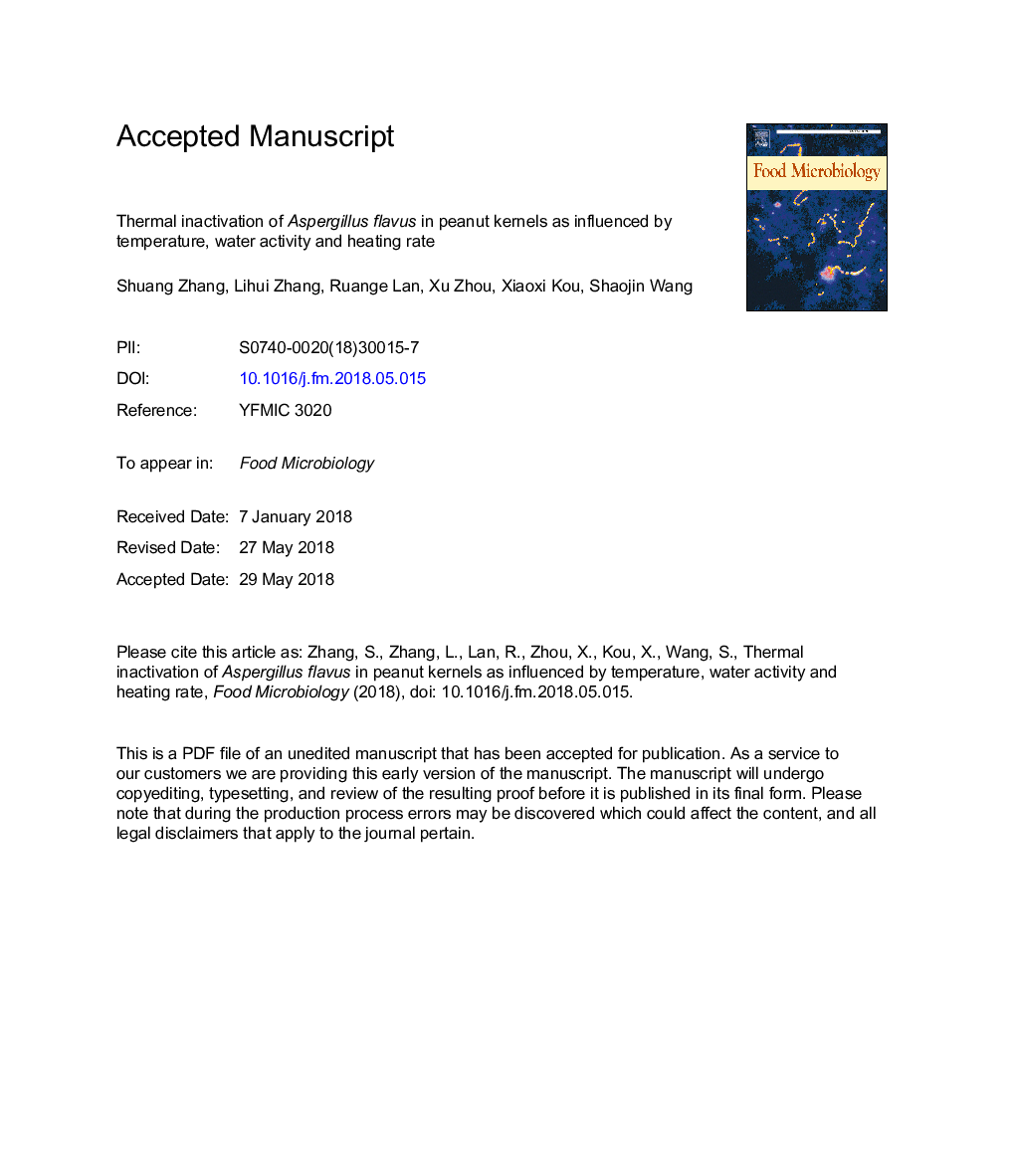| کد مقاله | کد نشریه | سال انتشار | مقاله انگلیسی | نسخه تمام متن |
|---|---|---|---|---|
| 8843437 | 1616225 | 2018 | 32 صفحه PDF | دانلود رایگان |
عنوان انگلیسی مقاله ISI
Thermal inactivation of Aspergillus flavus in peanut kernels as influenced by temperature, water activity and heating rate
دانلود مقاله + سفارش ترجمه
دانلود مقاله ISI انگلیسی
رایگان برای ایرانیان
کلمات کلیدی
موضوعات مرتبط
علوم زیستی و بیوفناوری
علوم کشاورزی و بیولوژیک
دانش تغذیه
پیش نمایش صفحه اول مقاله

چکیده انگلیسی
Infection of Aspergillus flavus, which can produce aflatoxin, is a major problem for peanut safe storage. Thermal inactivation kinetics of Aspergillus flavus is essential to design an effective heat treatment process. In this study, thermal inactivation kinetics of Aspergillus flavus in peanut kernel flour at four water activity (aw) levels (0.720, 0.783, 0.846, and 0.921) with three temperatures for each aw was studied using a thermal-death-time heating block system and fitted with first-order kinetic and Weibull models. The influence of heating rates on thermotolerance of Aspergillus flavus was also investigated. The results showed that the Weibull distribution model had better coefficient of determination from 0.954 to 0.996, as compared to that (from 0.866 to 0.980) of the first-order kinetic model. An upward concavity was found with the inactivation curve, indicating a tailing effect. Model parameters (D, δ, and p) were estimated with the modified Bigelow equations to predict survival curves of Aspergillus flavus at any temperature and aw. The reduced heat resistance of Aspergillus flavus at high heating rates above 1â¯Â°C/min suggests that developing fast thermal processes is preferred for pasteurizing peanuts in food industry. A case study was presented for applying the cumulated lethal time model to design the industrial heating process based on the thermal kinetics of Aspergillus flavus.
ناشر
Database: Elsevier - ScienceDirect (ساینس دایرکت)
Journal: Food Microbiology - Volume 76, December 2018, Pages 237-244
Journal: Food Microbiology - Volume 76, December 2018, Pages 237-244
نویسندگان
Shuang Zhang, Lihui Zhang, Ruange Lan, Xu Zhou, Xiaoxi Kou, Shaojin Wang,